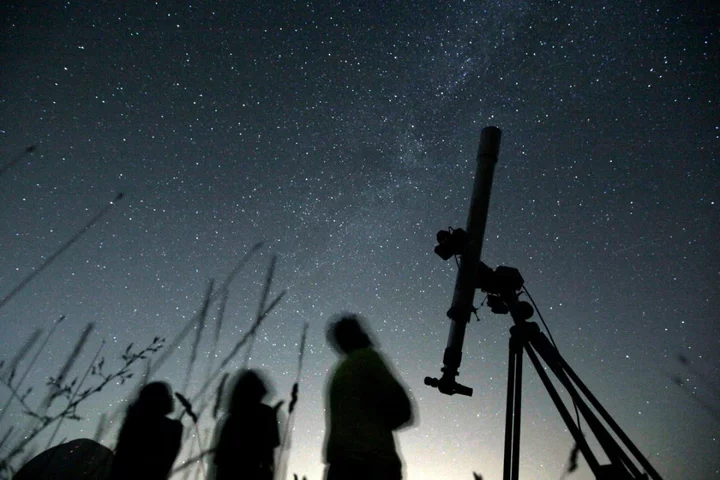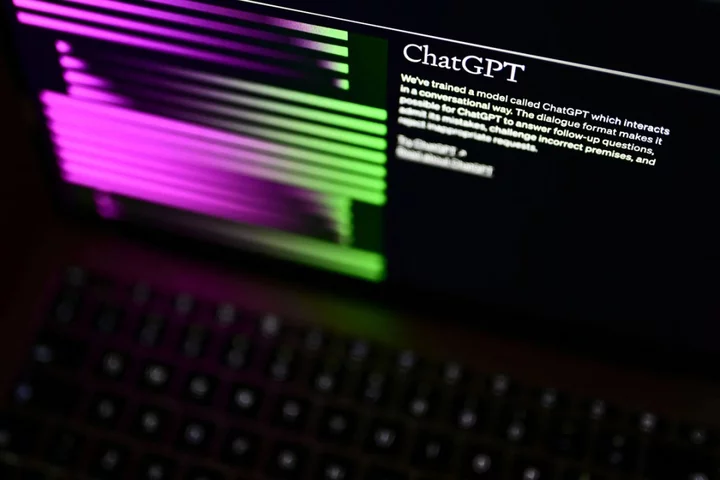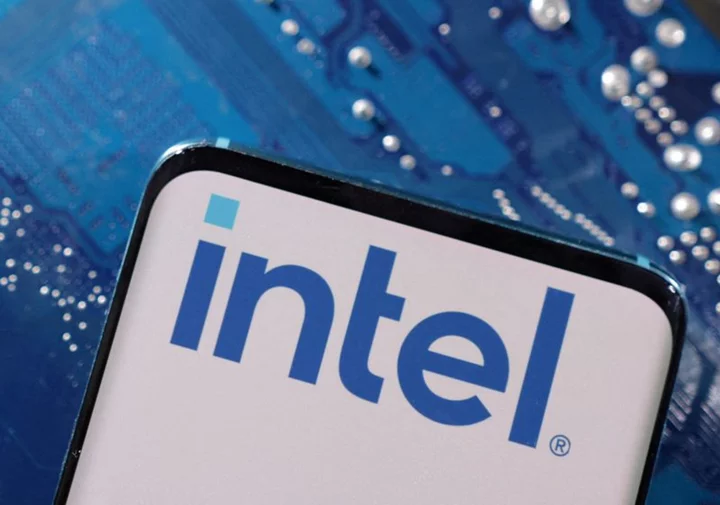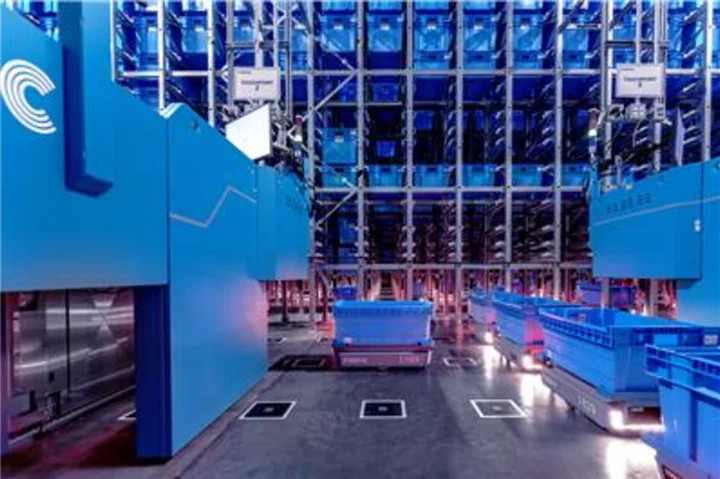
iOS 17.2: Update bringing host of new changes including Journal app and iPhone 15 Pro features
Apple is preparing a new update that will bring a host of new features to the iPhone. Some of the tools were announced in June, when Apple first showed off its major iOS 17 update, such as the long-awaited Journal app. That uses machine learning to understand what people have done in a day, and encourages them to write about their activities to remember them. Some are unexpected. That includes new updates to the iPhone 15 Pro’s action button: now, users can press the button to bring up a translate option, which shows a window and lets people speak text to have it appear in another language. The action button was introduced with the iPhone 15 Pro last month, as a replacement for the mute switch that can be mapped to any activity. Apple did not say then that it was planning to introduce new actions for that button. The new update also lets people add stickers as reactions on messages, collaborate on Apple Music playlists, redesigns the Apple TV app and some widgets, and more. iOS 17.2 was released as a developer beta update this week. It will likely make its way to everyone’s phones in November or December, though it will be possible to get it earlier by signing up to Apple’s public beta channel. Those on the public updates received their own update this week, in the form iOS 17.1. But the changes introduced with that update are more limited, such as new settings for the StandBy mode that shows when a phone is placed on its side and an AirDrop feature that lets transfers continue over the internet when devices are separated. Read More The Apple Watch feature everyone has been waiting for has finally arrived Apple’s plans for the future of AirPods might just have been revealed Apple TV+ and other subscriptions are about to get a lot more expensive
2023-10-28 01:15

Infrared ‘aurora’ like northern lights spotted on Uranus could help find alien life, scientists say
Scientists have spotted an infrared aurora on Uranus that could help us find alien life. On Earth, aurorae are best known in the form of the northern lights, when bright light streaks across the sky. Uranus also has its own aurora – though it is not visible in the same way, because of the different atmosphere on that planet. Researchers have known about ultraviolet aurorae on Uranus since 1986. But now scientists have confirmed there are infrared aurorae on the distant planet, too. Scientists hope that the findings could help explain the magnetic fields of other planets in our solar system. And it could help us find out whether distant planets support alien life. Aurorae happen when charged particles arrive at a planet and hit its atmosphere, brought down through its magnetic field lines. To better understand those on Uranus, researchers analysed the light from the planet and watched for a specific charged particle that changes brightness depending on how how it is and how dense the atmosphere is, so that it can be used as a thermometer. The researchers found that the density of that particle significantly increased, which suggests they are being ionised by an infrared aurorae, they say. Scientists hope that will inform our understanding of other, similar planets, as well as which worlds might be suitable for alien life. “The temperature of all the gas giant planets, including Uranus, are hundreds of degrees Kelvin/Celsius above what models predict if only warmed by the sun, leaving us with the big question of how these planets are so much hotter than expected? One theory suggests the energetic aurora is the cause of this, which generates and pushes heat from the aurora down towards the magnetic equator,” said Emma Thomas from the University of Leicester, who was lead author on the new study. “A majority of exoplanets discovered so far fall in the sub-Neptune category, and hence are physically similar to Neptune and Uranus in size. This may also mean similar magnetic and atmospheric characteristics too. By analysing Uranus’s aurora which directly connects to both the planet’s magnetic field and atmosphere, we can make predictions about the atmospheres and magnetic fields of these worlds and hence their suitability for life. “This paper is the culmination of 30 years of auroral study at Uranus, which has finally revealed the infrared aurora and begun a new age of aurora investigations at the planet. Our results will go on to broaden our knowledge of ice giant auroras and strengthen our understanding of planetary magnetic fields in our solar system, at exoplanets and even our own planet.” The findings might also help explain a mysterious phenomenon on Earth known as geomagnetic reversal, where the north and south pole switch around. Scientists still know very little about that rare phenomenon, and how it might affect things such as satellites and communications. That process happens every day on Uranus, however. Researchers hope they can use its aurorae to get better data on the nature of that reversal – and what might happen if Earth has one, too. The findings are described in a new paper, ‘Detection of the infrared aurora at Uranus with Keck-NIRSPEC’, published in Nature Astronomy. Read More People don’t know their Uranus from Eridanus when it comes to astronomy Scientists find surprise ‘layer’ underneath surface of Mars Scientists see huge explosion in space – and it could explain life
2023-10-28 00:57

EU's von der Leyen to attend Britain's AI summit
By Martin Coulter LONDON Two of the European Union's most senior officials plan to attend Britain's artificial intelligence
2023-10-28 00:27

ChatGPT creators OpenAI form ‘Preparedness’ group to get ready for ‘catastrophe’
OpenAI, the creators of ChatGPT, have formed a new group to prepare for the “catastrophic risks” of artificial intelligence. The “Preparedness” team will aim to “track, evaluate, forecast and protect against catastrophic risks”, the company said. Those risks include artificial intelligence being used to craft powerful persuasive messages, to endanger cybersecurity and to be used in nuclear and other kinds of weapons. The team will also work against “autonomous replication and adaptation”, or ARA – the danger that an AI would gain the power to be able to copy and change itself. “We believe that frontier AI models, which will exceed the capabilities currently present in the most advanced existing models, have the potential to benefit all of humanity,” OpenAI said. “But they also pose increasingly severe risks.” Avoiding those dangerous situations will mean building frameworks to predict and then protect people against the dangerous capabilities of new artificial intelligence systems, OpenAI said. That will be one of the tasks of the new team. At the same time, OpenAI launched a new “Preparedness Challenge”. That encourages people to think about “the most unique, while still being probable, potentially catastrophic misuse of the model” such as using it to shut down power grids, for instance. Particularly good submissions of ideas for the malicious uses of artificial intelligence will win credits to use on OpenAI’s tools, and the company suggested that some of those people could be hired to the team. It will be led by Aleksander Madry, an AI expert from Massachusetts Institute of Technology, OpenAI said. OpenAI revealed the new team as part of its contribution to the UK’s AI Safety Summit, which will happen next week. OpenAI was one of a range of companies that have made commitments on how it will ensure the safe use of artificial intelligence. Read More WhatsApp update will change how you log in forever ChatGPT creator quietly changes core values from ‘thoughtful’ to ‘scrappy’
2023-10-28 00:19

Low-cost e-commerce rivals Shein and Temu shelve US court cases
By Casey Hall SHANGHAI Fierce rivals Shein and PDD Holdings-owned Temu have applied to end their legal fights
2023-10-27 23:17

Exxon Sees ‘Promising’ Future for Lithium in Arkansas, CEO Says
Exxon Mobil Corp. has never talked specifically about its lithium plans, because they’re still in very early stages.
2023-10-27 22:57

Chipmaker Intel soars on signs of PC market recovery
By Samrhitha A Intel rose nearly 8% on Friday and sparked a jump in chip stocks after its
2023-10-27 21:54

Sam Bankman-Fried jury to hear FTX founder's testimony in fraud trial
By Jody Godoy and Luc Cohen NEW YORK - Sam Bankman-Fried is expected to take the stand on Friday at
2023-10-27 21:19

Germany Stands Ready to Back Strategic Asset Siemens Energy
Germany’s Economy Ministry is prepared to support Siemens Energy AG because it sees the company as a strategic
2023-10-27 20:46

Sony defends PS Plus price hike: 'We want to make it great'
Sony is confident PS Plus subscribers are getting value for money.
2023-10-27 20:29

Skull and Bones faces SIXTH delay
'Skull and Bones' has been pushed back once again as Ubisoft amits to a tough time financially.
2023-10-27 20:27

Alan Wake 2 to get 'alternative narrative' and 'Nightmare difficulty level'
Remedy Entertainment has revealed details of the game plus mode.
2023-10-27 20:26
You Might Like...

How to Use Google Bard AI: 10 Ways It Can Make Your Life Easier

String of Global Heat Records Raises Alarm on Climate Change

Women's football aces coming to EA Sports FC 24

A Paid Version of Facebook and Instagram May Be Coming to the EU

Funds Hunting for Hot Investments in Water Have Few Good Options Left

Marvel's Spider-Man 2 developers put own spin on Venom

Fabric’s Innovative Automated Fulfillment Solution Wins Two Prestigious Honors

OnlyFans model reveals unhinged messages from men after posting about new car
